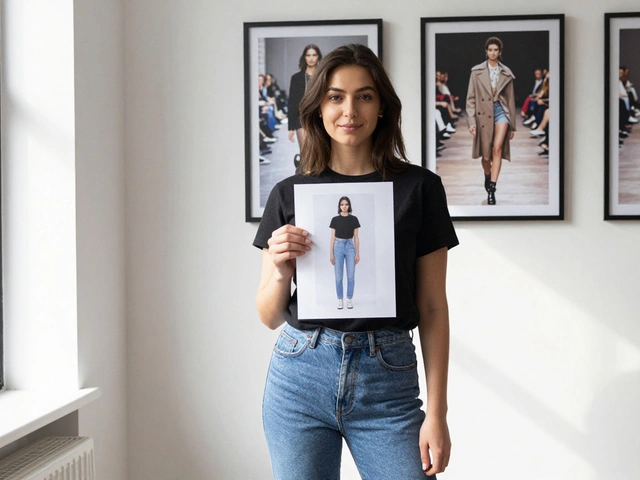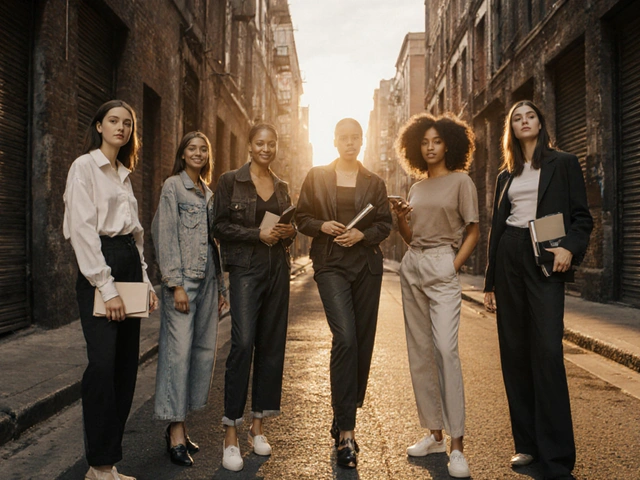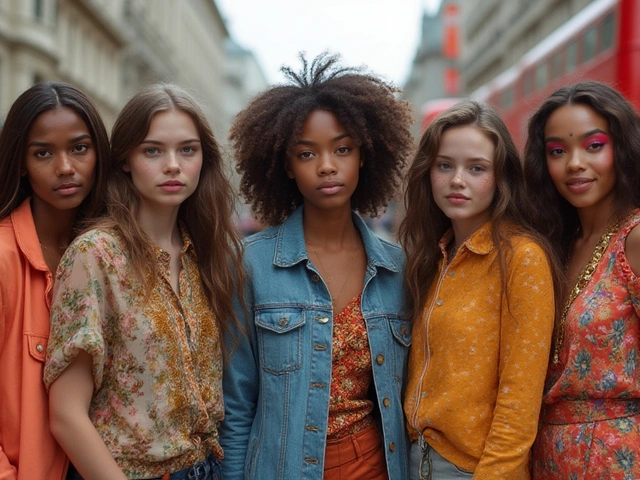If you think modeling is just about being “pretty,” you’ve already missed the real secret. Agencies and brands want more than just a good-looking face—they want people who bring something special, even if it’s just killer confidence or killer cheekbones. Personality counts just as much as height or measurements.
Your first move isn’t hunting for gigs on sketchy websites. It’s taking honest, clear photos of yourself (no filters, good lighting, simple outfits). These are what agencies want to see, not heavy edits or awkward poses you copied from TikTok. They want to know what you actually look like, not what your phone’s beauty filter says you do.
Don’t waste your cash on expensive photo shoots at the start. Most real agencies prefer raw “digitals” over flashy portfolios created by photographers selling dreams. Save your money for travel to castings and healthy food—trust me, you’ll thank yourself later.
- What the Industry Looks for in New Faces
- Building Your Portfolio and Getting Noticed
- Scams and Red Flags to Avoid
- Professionalism on and off the Camera
- Coping with Rejection and Staying Motivated
What the Industry Looks for in New Faces
If you ask ten models how they got their big break, you’ll hear ten different stories—each just as random as the last. But don’t be fooled; modeling agencies actually have a checklist when hunting for fresh talent. It goes way beyond just being “good-looking.” Agencies want that certain something—a look, vibe, or attitude they can’t find in yesterday’s faces. So what’s on their radar right now?
- How to become a model starts with understanding your “type.” Agencies need variety: classic beauty, edgy and unconventional, athletic, mature, or even super short or tall. Some agencies hunt for androgynous looks, others want curvy models, and lots are after unique features like gaps in teeth, freckles, or interesting profiles. Don’t worry if you don’t see a carbon copy of yourself in magazines—brands want something new.
- Height still counts, especially for runway (usually 5’9”+ for women and 6’+ for men), but the bar is lower for commercial, print, or niche markets like petite or plus-size. Age matters less than you think—there have been successful models debuting at 16, and others becoming faces of campaigns in their late 30s.
- Skin, hair, and body should look healthy more than “perfect.” There’s no need to change who you are, but you do have to show your real self: clear digitals, natural hair texture, clean skin, no heavy makeup, and no funky angles. Agents want to see your true features so they can imagine you for many roles.
- Agencies look for people who follow instructions and show up on time. You’d be shocked how many drop the ball just by forgetting this basic stuff. First impressions matter—a lot.
- Personality and attitude are underrated. Being photogenic is great, but if you’re hard to work with, don’t take direction, or act like a diva, you won’t be around long. Humility and flexibility go way further than ego.
All of this means there’s no single formula for getting noticed. The trick is to show what makes you different, not to hide it or copy what everyone else is doing on social media. The top agencies—IMG, Ford, Elite, and hometown favorites in your city—are always scouting for something new. Sometimes all you need is to stand out for real, and not just pretend to be someone else.
Building Your Portfolio and Getting Noticed
Your portfolio is your sales pitch. It’s your chance to show agencies and clients what you really look like and how you photograph—not just in one good selfie, but across different moods and outfits. The portfolio isn’t about quantity; it’s about showing your best, most natural self. Don’t stress about adding a ton of photos. Two to four clear, professional-looking images (called 'digitals' or 'polaroids') are the gold standard. These are always unedited, in simple outfits (think a plain white tee and jeans), with natural light and a clean background. Agencies see hundreds of shots every day and they spot over-edited pics a mile away.
- Headshot (no makeup or very minimal, hair back)
- Full body shot (standing straight, both arms to your sides)
- Profile shot (side view)
- Smiling shot (let them see your teeth if possible)
You don’t need fancy gear—a decent smartphone camera and a friend with a steady hand work just fine. Stand by a window or outside in shade for good light if you don’t have studio lamps.
If you want variety, you can add a few stylized photos later. But don’t shell out for expensive photographers when starting. Top agencies—like IMG, Ford, and Elite—say your 'digitals' are what matter when you’re fresh. Once you book real jobs, update your portfolio with published work, like magazine tear sheets or campaign shots.
Getting noticed means you need people in the industry to actually see you. This means submitting your shots through agency websites rather than shady DMs or "model scouts" who want you to pay upfront. Most legit agencies have a direct online submission page, and it doesn’t cost a dime. If you're under 18, make sure a parent or guardian is in the loop and helps with your application—it’s the industry rule.
- Attend agency open calls (most are weekly or monthly; check agency websites for dates)
- Use social media with care: keep your Insta feed clean, tag agencies, but never trust random messages offering a 'guaranteed contract'
- If you get invited to an agency, check the address matches what’s on their website—scammers use fake offices
Now for some quick numbers—ever wonder what most new models put in their portfolio and how often they update it? Check the table below:
| Portfolio Element | % of new models using | How often updated |
|---|---|---|
| Digitals | 95% | Every 3-6 months |
| Professional 'editorial' shots | 40% | Once established/after bookings |
| Published/pro campaign images | 28% | After each major job |
Building your portfolio doesn’t have to break the bank and you don’t need insider connections. It’s all about showing who you are, shooting straight, and sending those pictures to real agencies. That’s how you stand out in the how to become a model process.

Scams and Red Flags to Avoid
It’s scary how many modeling scams are out there, and they all know exactly how to make inexperienced talent cough up cash. The golden rule? Real agencies don’t ask for big upfront fees or push weird “modeling schools” you have to pay for. If someone says you must buy an expensive portfolio from their photographer or else you’ll miss your big break, run.
There’s legit data backing up how common these scams are. The Better Business Bureau reported over 2,300 scam complaints linked to the modeling business in 2024 alone, hitting people with promises of stardom and draining their wallets. Most complaints fit a handful of patterns:
- Upfront “signing” fees (usually $300–$1,000 or more)
- Required classes or workshops that cost a fortune
- Demands for money to be featured in a “casting list” or comp card service
- Messages from “scouts” using Gmail or Instagram DMs who don’t even have a company website
Legit agencies like IMG or Ford will never slide into your DMs and then ask you to wire cash. They want you to apply online, send your digitals, and come to a casting if they’re interested. If things start sounding fishy, do a quick check:
- Find the agency’s real website and look up their contact info.
- Google the agency along with words like “scam” or “complaints”.
- Ask to speak to current models who are represented. Fake agencies dodge this question.
Watch out for fake jobs posted on job boards, too. If it sounds too good to be true—like super high pay for no experience or mystery location shoots—it probably is.
| Scam Type | Average Loss (USD) | Number of Reports |
|---|---|---|
| Fake Photo Portfolio Packages | $600 | 890 |
| Upfront "Agency Fees" | $350 | 590 |
| Paid "Model Training" Classes | $700 | 470 |
| Social Media "Scout" Scams | $400 | 370 |
The how to become a model journey is full of real opportunities, but you’ve got to be sharp—there are way more scammers than agents out there. Trust your gut, do your research, and never pay to play. The legit agencies get paid when you work—never the other way around.
Professionalism on and off the Camera
If you want agencies to remember you (for good reasons), you need to nail professionalism both when you’re posing and when you’re nowhere near a lens. It’s not just about how you act during a shoot—they’re watching how you handle emails, time management, and even your social media.
On set, always show up early. Every minute late risks leaving a bad impression with everyone from the makeup artist to the client. If a call time is 8:00 am, aim to be there ready to go by 7:45. Bring what they tell you to bring—nude underwear, simple heels, clean face, plain nails. Being prepared tells everyone that you take the job seriously.
Agencies get mountains of emails daily. Keep communication clear, polite, and quick. If they ask for new digitals, send them promptly with zero drama or excuses. Even on boring commercial gigs, be polite and thank everyone: that attitude gets noticed more than you think. Famous male model David Gandy once said that being "decent and easy to work with opened more doors for him than his looks ever did."
- Never ghost on a casting or bail last minute, unless it’s an emergency (and if so, give as much notice as you can).
- Switch your phone on silent, not off. You don’t want to miss a message from a booker juggling a hundred moving pieces.
- Leave negative vibes at the door. People talk, and word gets around quickly about complainers or divas.
Don’t sleep on your online presence either. In 2023, over 80% of casting directors said they checked social media before calling someone in. Make sure your Instagram shows a bit of personality but stays mostly drama-free and professional. The silly stuff you posted back in high school? It might come back to haunt you—and agencies do look.
| Professionalism Factor | What Agencies Expect |
|---|---|
| Punctuality | Arrive 15 minutes early for jobs and castings |
| Communication | Reply to emails within 24 hours |
| Preparedness | Bring required wardrobe and show up with plain nails, clean hair |
| Attitude | Polite, adaptable, open to direction |
| Social Media | Clean, brand-friendly, active |
It doesn’t take a superstar to be memorable in this line of work—just a model who is straightforward, reliable, and sharp. If you consistently act like a pro, you’re more likely to land steady work and get recommended. That’s how you stand out in the how to become a model game.

Coping with Rejection and Staying Motivated
If you can’t handle being told “no,” the modeling world will eat you alive. For almost everyone, rejection happens way more than booking gigs. Even Naomi Campbell was turned down by agencies early in her career. Sometimes you won’t get picked, no matter how perfect you think you are for the job. It’s not always about you—it’s often just what the client needs right then.
The trick is not letting a few “no’s” wreck your confidence. Don’t take it personally. Agencies and brands are often looking for a specific look or vibe. Next campaign? They might want the exact opposite. This is where solid self-confidence comes into play. Keep in mind, the average model goes to dozens of castings to land one good job, and that hasn’t changed even in 2025.
Staying motivated isn’t automatic—you’ve got to work at it. Here are some solid tips to keep yourself moving, even on the days you feel like giving up:
- how to become a model: Build a healthy routine outside castings to stay grounded. Work out, eat well, and make friends outside the industry for balance.
- Talk to other models. Online forums and local groups exist for a reason; shared experience makes the struggle feel less isolating.
- Use a rejection log. Jot down auditions you didn’t book and how you bounced back. When you start seeing more “yes” than “no,” you’ll know you’re growing.
- Set small, short-term goals. Maybe it’s updating your digitals this month, or learning new runway moves. Crushing a few of these helps you see progress.
And remember: persistence pays off big time. Most successful models say they were the ones who just kept showing up. Tomorrow’s “no” could lead to next week’s dream job.








